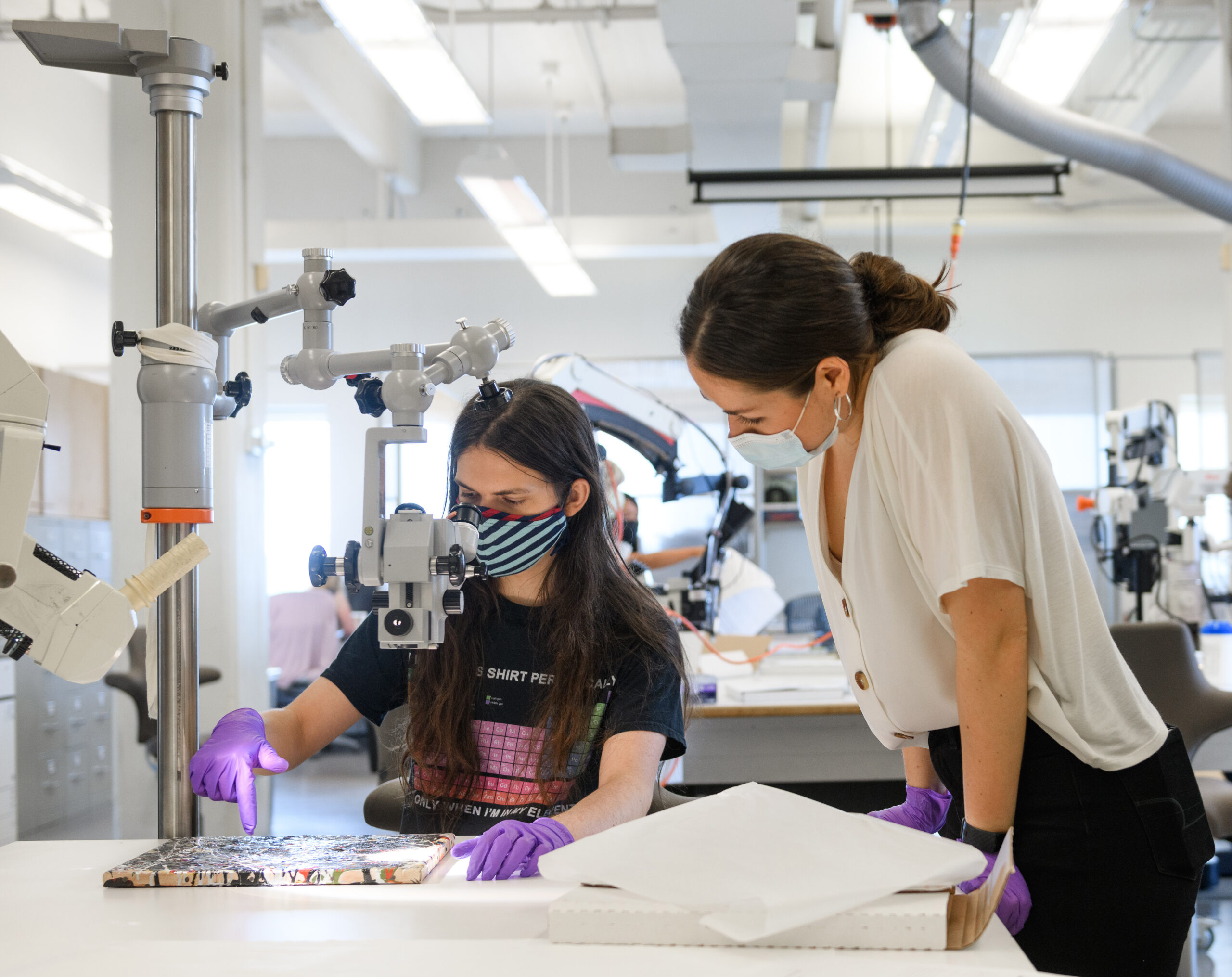Your browser is out-of-date!
Update your browser to view this website correctly. Update my browser now
Hands Off: Adapting Values-Based Decision Making Strategies to Conservation during the COVID-19 Pandemic
by Celeste Mahoney, 2020–2021 Dedalus Fellow in Conservation
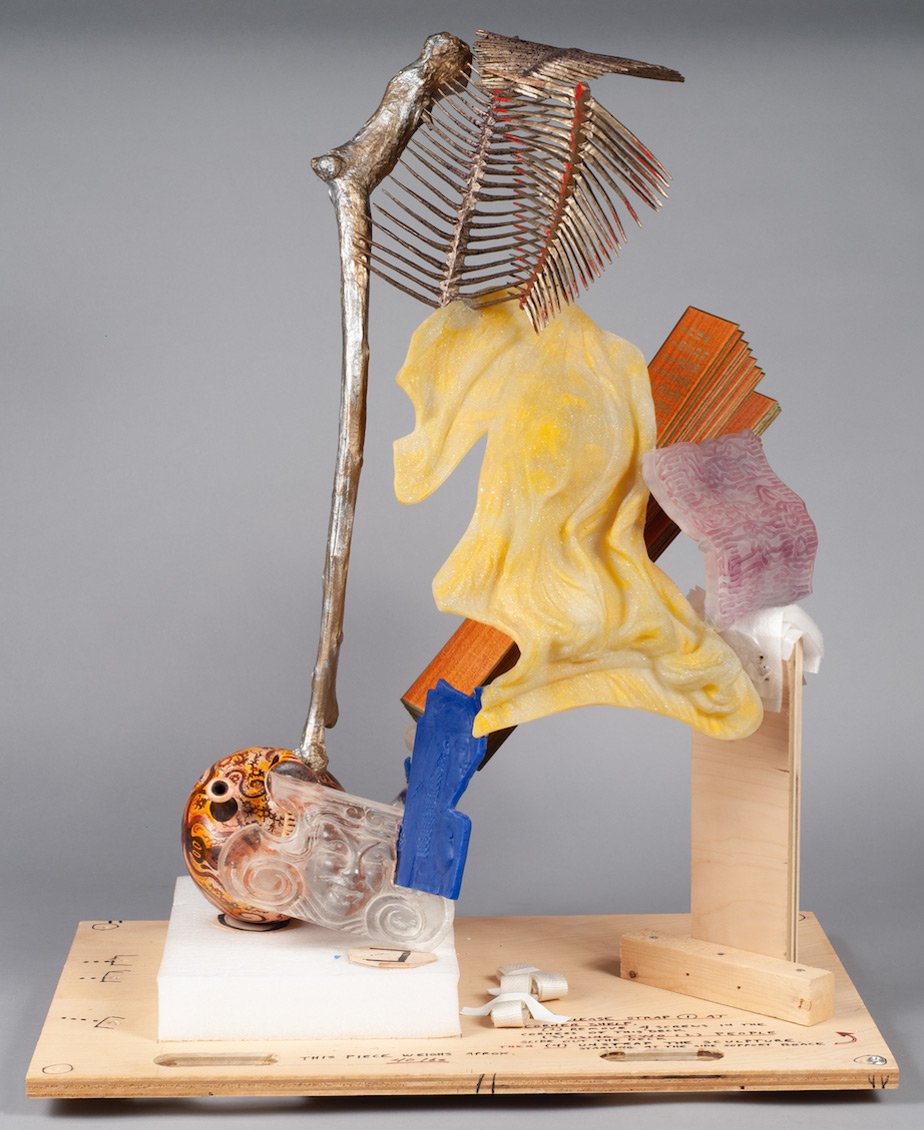
Fig. 1 Nancy Graves, Brooding Shut In, 1993, bronze, patinas, enamel, acrylics, resin, ceramic, fiberglass, pebbles, epoxy, and metal pellets, footprint 31.0 (H) x 23.0 (L) x 17.5 in (D).
Shown on its mount. Nancy Graves Foundation (photograph provided by Taylor Healy)
When the United States entered a nationwide lockdown in the spring of 2020, conservators everywhere became unable to access physically the tangible art and other cultural assets they were treating. New York University pivoted to remote learning in March, and students of the Conservation Center of the Institute of Fine Arts were left wondering how to complete their treatment projects. I was in the same predicament: as students in Professor Michele Marincola’s class “Applying Values-based Decision Making in Objects Conservation,” my classmate Taylor Healy and I had been assigned two damaged sculptures from the Nancy Graves Foundation. Before the COVID-19 pandemic, we had assumed that this project would involve hands-on treatment, so after the pivot to remote-only learning, we wondered if the project could even continue without access to the objects and the conservation lab. However, this lack of access provided a unique opportunity to thoroughly investigate the objects’ values, meaning, and significance, and reflect on values-based decision-making models to better understand such an approach to conservation theory and practice. We were able to explore potential treatment options comprehensively as well as the art historical context of the objects’ components in a way that we would not have had time for otherwise. Ultimately, this project resulted in a deeper understanding of certain aspects of the objects that we would not have gained had we not been physically separated from them.
Values-Based Decision-Making (VBDM) in Conservation: What Is It?
Traditional conservation practice focuses on the preservation of a piece’s materiality; conservators try to address physical deterioration to ensure that the object is preserved for future generations. This approach is often couched within an assumption of “scientific objectivity”: the conservator is seen as a neutral, unbiased party, and the work they perform is based on calculated scientific reasoning. By contrast, values-based methods recognize that every conservation treatment involves the conservator making decisions that are inherently subjective, as every conservator views the world through the lens of their own unique experiences, professional training, and beliefs.[1] Values-based methods aim to identify parties with a significant interest in or concern for a work (stakeholders) as well as those who interact with it in any meaningful way (actants) in order to identify the values that they associate with the work. Philosopher and art historian Alois Riegl first analyzed the values that cultural heritage, in the form of historic structures, may hold in “The Modern Cult of Monuments: Its Essence and Its Development” in 1903.[2] Barbara Appelbaum, in her seminal book Conservation Treatment Methodology, applies and expands Riegl’s ideas to all tangible cultural assets and explains some of the values that may be determined through interviews with stakeholders and actants, such as aesthetic value (the object is appreciated for its visual appeal), historical value (its link with a past event or time period), use value (its functionality), age value (its signs of age), and newness value (its lack of signs of age).[3]
Artwork and other cultural assets are complex, containing layers of meaning that can change based on time, place, person, and situation. The conservation of modern and contemporary art highlights an additional weakness of the traditional materials-based approach: in some cases, the meaning of a work is not contained within its material form. A performance piece, for example, may not have any physical material at all that can be preserved. In this case, understanding the values inherent in a work is particularly important, as conservators can make more informed treatment decisions based not only on their own subjective understanding of the work but also on the values identified by the stakeholders and actants. Tangible modern and contemporary art is particularly likely to be associated with newness value. Appelbaum comments, “We like objects whose style is described as ‘modern’ or ‘contemporary’ to look new no matter what their actual age…Unlike more ornate styles, the ‘modern look,’ with its sleek and unadorned surfaces, is easily disturbed by small flaws. This is both an aesthetic and a psychological issue. For other objects that are no longer new, the look of newness can be unsettling.”[4]
Applying VBDM Principles to Nancy Graves’ Brooding Shut In (1993) and Descend and Rend (1993)
The Nancy Graves Foundation sent two pieces to the Conservation Center for treatment in the VBDM class: Brooding Shut In (fig. 1) and Descend and Rend (fig. 2), both created in 1993 by American artist Nancy Graves (1939–1995). These sculptural assemblages are part of Graves’ “Calendar” series, which is itself part of the larger “Bones, Gnomons, and Longitude” series executed in the early 1990s shortly before the artist’s untimely death. The “Calendar” series consists of four “three-dimensional collages,” each made up of nineteen separate elements joined together in a way that seems to defy gravity. Each piece is alike in the cast elements used and the sculptural construction, but the elements are cast in different materials and/or colors.

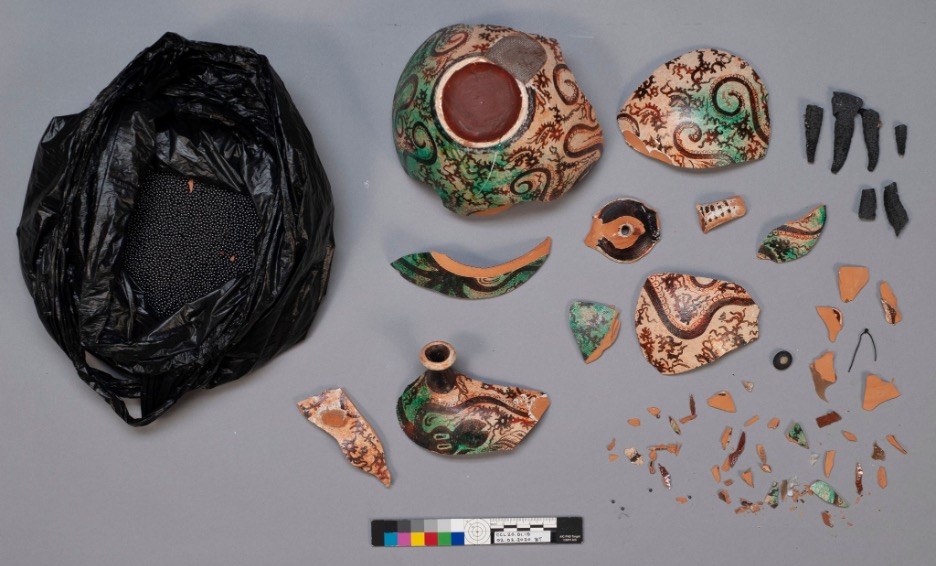
It was immediately apparent that the condition of the two sculptures was vastly different. Though Brooding Shut In was unstable and could not be removed from its mount, with failed structural joins between several elements, it was able to stand upright to give an idea of its intended sculptural form (fig. 3). Descend and Rend, however, had fallen off its pedestal during exhibition and had broken into many fragments. Though initially I was assigned Descend and Rend and fellow classmate Taylor Healy was assigned Brooding Shut In, we quickly realized that we should work together to pool resources and information since our objects were so closely intertwined. Series and multiples in contemporary art offer unique opportunities to compare and contrast similar works. In this case, much of the inferred production processes came from examination of Descend and Rend’s component parts, but information on the series’ intended form and aesthetic effect was gleaned from Brooding Shut In.
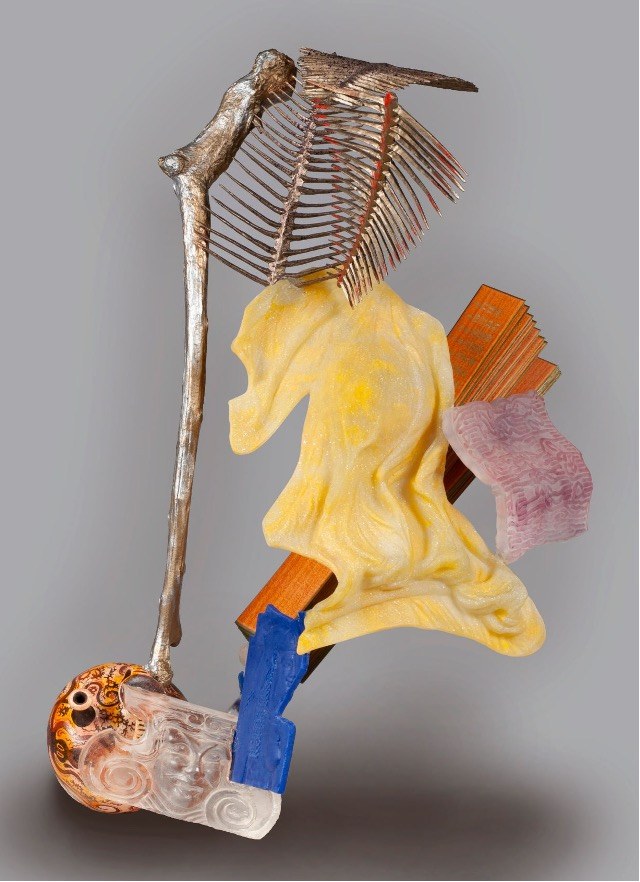
Fig. 3 Brooding Shut In visualization with crate mount digitally removed by the author.
Each sculpture had a very different status now as artworks, as well. Brooding Shut In was considered to be merely damaged and in need of repair. The damage sustained by Descend and Rend, however, was so severe that the sculpture was declared a “total loss” by the insurer. Works are typically deemed a “total loss” if the cost of conservation or replacement exceeds its monetary value, rendering the object “no-longer-art.”[5] These objects cannot be part of the commercial art market, as they now have zero market value, and are removed from the artist’s oeuvre. In the case of Descend and Rend and Brooding Shut In, the former’s status as “no-longer-art” and the latter’s as “damaged artwork” resulted in different values despite their original similarities. Taylor and I had to determine not only whether Descend and Rend was physically able to be repaired, but whether the values associated with the piece would allow reassembly and repair in a theoretical sense.
To understand the significance, meaning, and values attached to the objects, we first had to identify stakeholders. We determined that Christina Hunter, the executive director of the Nancy Graves Foundation, was the primary stakeholder, along with Donald Saff of Saff Tech Arts, who had cast the plastic components of the structures and constructed them (along with many of Graves’ other sculptures) in collaboration with Graves. Saff indicated that he did not recall production of these particular pieces, but that the Smithsonian’s Archives of American Art had recently acquired Saff Tech Arts’ records. This was a dead end at the time, however, since the Archives were inaccessible due to the pandemic. Luckily, before lockdown began, Taylor and I were able to interview Hunter, who is extremely knowledgeable and informative. The archives at the Foundation also provided information on Nancy Graves’ attitudes towards her work, which is crucial to investigate when an artist is deceased or unable to be interviewed.
Based on our visit, we identified the primary values associated with each piece. Brooding Shut In had current associative value because of its status as a Nancy Graves artwork. Its aesthetic and artistic values were affected by the damage, but would increase after a successful treatment, when the mount would no longer be part of the visual experience. The work is what Graves called an “eye mover,” a sculpture that stimulates the viewer’s eyes to continuously move from element to element.[6] According to Hunter, the intended construction and aesthetic effect created by the “gravity-defying” elements is more valuable than the method used to join and stabilize the sculpture.[6] Hunter also stressed that Graves’ sculptures must return to “perfect condition,” without missing or damaged parts or signs of age, as this is contrary to the artist’s vision. Damaged artworks and component parts are unacceptable representations of the artist’s oeuvre. This indicates that significant newness value is associated with authentic Nancy Graves pieces. To restore the newness, artistic, aesthetic, and monetary value of Brooding Shut In, a successful treatment would have to eliminate or mitigate signs of damage and/or aging to restore the piece to as close to the “original state” as possible, as if it had just left the artist’s studio.
Because of the significance of newness value for Nancy Graves works, Descend and Rend could never be exhibited in its current state. Because of its status as “no-longer-art,” it is stripped of its associative value since it is no longer officially considered part of Nancy Graves’ oeuvre. Hunter likened Descend and Rend to a corpse and Brooding Shut In to a living patient: the former could be studied, dissected, and experimented upon, and the resulting information gleaned could be utilized to treat and hopefully “cure” the sick. Therefore, Descend and Rend has research and use value as a study object. We could perform materials testing and identification and experiment with treatment techniques (including joining methods, destructive analysis, drilling, pinning, adhesive experimentation, and strength testing) that would normally be considered too risky or unnecessary to perform on original material.
Based on the values determined for each piece, what types of outcomes were reasonable? While Brooding Shut In’s joins were damaged between many of the sculptural elements, it was conceivable that it could be returned to an acceptable exhibitable state, with as little visually-distracting external support as possible. In contrast, because of Descend and Rend’s status as a total loss, even if reassembly and repair were feasible, its inherent values indicated such a course of action would be inappropriate. Taylor and I determined that we would focus our conservation efforts on Brooding Shut In while using Descend and Rend as a study object.
We began our treatment by taking initial photographs of both pieces, as well as performing x-radiography and some initial instrumental analysis (Fourier-transform infrared spectroscopy, or FTIR). However, after the Conservation Center pivoted to remote learning, we refocused our efforts. To flesh out the art historical background, we researched how Nancy Graves worked, and we were particularly interested in investigating the inspirations behind each of the elements composing the sculptures. Hunter mentioned during our interview that Graves often cast from reproductions of well-known historical images or directly from natural specimens using traditional direct and indirect casting techniques. Natural objects were typically cast in bronze or resin: for the “Calendar” series, each work has a bronze crayfish and bronze sheep and fish bones as well as a resin starfish. While investigating potential sources of inspiration for the ancient Egyptian relief, (fig. 4, left), I discovered an identical plaque in the collection of the Metropolitan Museum of Art (MMA) (fig. 4, right). A visit to the MMA, where it is on display in the Egyptian galleries, confirmed our suspicions. We determined that a reproduction of the plaque was sold in the MMA gift shop in the 1990s, reinforcing Hunter’s comments about the way Graves had worked. It is plausible that Graves used one of these reproductions to cast this particular component of the “Calendar” series. Hunter had identified the hand as cast from a replica of Michelangelo’s Dying Slave (fig. 5). Taylor discovered that the large cast yellow component of Brooding Shut In (green in Descend and Rend) is from the left breast of the reclining figure from the east pediment of the Parthenon at the British Museum. If we had been able to treat our objects, we may not have had the time to investigate the component parts so thoroughly.

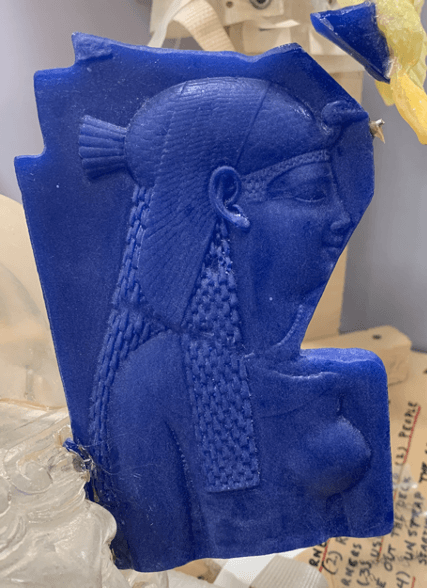
We were also determined to leave a comprehensive record for anyone who may interact with the pieces in the future. In accordance with VBDM models, we included specific discussion in our reports about the values we had identified within each work. Traditionally, detailed explanations of a conservator’s decision-making processes will not be recorded in treatment documentation. However, Taylor and I were inspired by conservator Sanneke Stigter’s more personal approach to textual documentation, wherein the conservator creates a present-tense, first-person narrative that describes the decision-making process in detail.[7] For example, instead of writing “The extant coating on the ceramic was removed with acetone,” following Stigter’s suggestions, it might sound more like this: “I removed the extant coating from the ceramic’s surface because it had yellowed and was dulling the colors of the underlying glaze, affecting my aesthetic interpretation of the work. I used acetone applied with a cotton swab because it effectively removed the coating with little residue and evaporated quickly, with no damage to the ceramic body.” Explicitly recording the thought processes behind even small decisions provides the opportunity for the conservator to understand how one may make those decisions and study their effectiveness, leading to more purposeful and informed practices in the future. To that end, we created a “treatment tree” flowchart outlining every treatment option we could think of for Brooding Shut In using a web-based data-visualization application called Lucid Chart. We brainstormed as many treatment actions as we could think of, including many that we would not typically consider acceptable (such as replacing the damaged components of the sculpture with the matching ones from Descend and Rend), and included an analysis for each action that assessed how it would affect the sculpture’s values. This process made evaluating courses of action as either acceptable or unacceptable fairly straightforward: either the action was compatible with the object’s values or it wasn’t. Finally, we wrote a reflection on the project which contained more of our thoughts and feelings on our experience and framed it within the context of the pandemic.
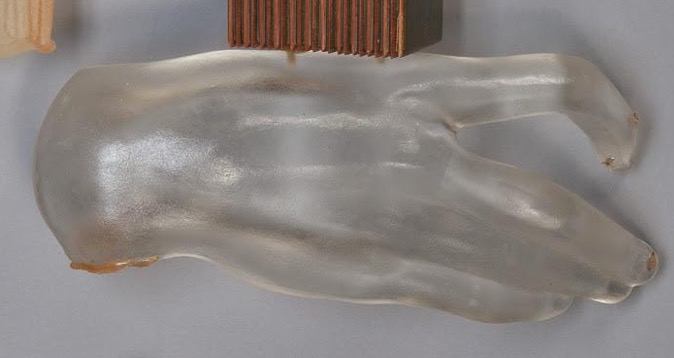
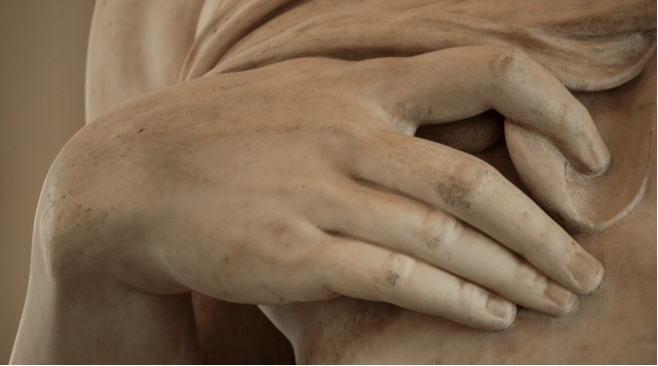
This story does not yet have a happy ending. The Conservation Center reopened for limited in-person classes (with many safety protocols firmly in place) in fall 2020. Unfortunately, over one weekend early in the semester when the building was empty, Brooding Shut In fell off of its mount and suffered more damage (fig. 6). Although we cannot be certain, we posit that the internal stresses resulting from the fabrication method, where numerous, heavy pieces were adhered so they hung in space, led to the initial cracking within the sculpture. Combined with an unstable mount that was not adequately supporting the sculpture’s components, these issues led to the eventual collapse of the sculpture. Students Isabelle Lobley and Ameya Grant were assigned the two works for Lynda Zycherman’s class “Practical Problems in the Conservation of Modern and Contemporary Objects” in the spring of 2021. They contributed even more valuable documentation to the project, including additional insight into the art historical context of the components. Reassembly of the now further-damaged Brooding Shut In was exponentially more difficult. Recognizing the importance of interdisciplinary collaboration, Isabelle and Ameya consulted with Eric Araujo, a mountmaker at the Museum of Modern Art (MoMA). Together, they determined that the piece required more intervention than the students and resources of the Conservation Center could provide. However, though the pieces will not continue to be treated at the Conservation Center, this project is ongoing—in the next phase, Hunter will examine the sculptures to understand their current condition before they are shipped back to the Nancy Graves Foundation.
Ultimately, this project provided a starting point for the long-term study and preservation of these two works. The period of Nancy Graves’ artistic production shortly before her death is underrepresented in art historical literature, and all the students involved were able to contribute more context to her “Calendar” series. The physical separation from the two pieces allowed Taylor and me to thoroughly investigate VBDM models, and the lessons we learned will have far-reaching consequences: how we make and record decisions has been forever shaped by these principles. As the 2020–2021 Dedalus Foundation Fellow in Conservation, I expanded upon and applied values-based methods I learned during the Nancy Graves project to eight objects I treated over the course of the past academic year, greatly strengthening my understanding of how I want to practice conservation in the future. Without the circumstances created by the COVID-19 pandemic, such insights would not have been as deeply explored.
Citations
[1] Jan Dariusz Cutajar et al., “A Significant Statement: New Outlooks on Treatment Documentation,” Journal of the Institute of Conservation 39, no. 2 (July 2, 2016), DOI: 10.1080/19455224.2016.1212717, 82–83. See also Salvador Muñoz Viñas, Contemporary Theory of Conservation (Oxford; Burlington, MA: Elsevier Butterworth-Heinemann, 2005).
[2] Alois Riegl, “The Modern Cult of Monuments: Its Essence and Its Development,” in Historical and Philosophical Issues in the Conservation of Cultural Heritage, ed. Nicholas Stanley-Price, Mansfield Kirby Talley, and Alessandra Melucco Vaccaro, 69–83, Readings in Conservation (Los Angeles: Getty Conservation Institute, 1996).
[3] Barbara Appelbaum, Conservation Treatment Methodology (Amsterdam ; Boston: Butterworth-Heinemann, 2007), 86–115.
[4] Appelbaum, 108–9.
[5] Raamy Majeed, “From Zombie Art to Dead Art,” Think 15, no. 43 (2016): 25–37.
[6] Joan Simon, “Nancy Graves: Choreo-Graphs,” in Timepieces: A Collaboration of Nancy Graves With Saff Tech Arts (Gainesville: Brenau University Galleries, 1995), 4.
[7] Sanneke Stigter, “Autoethnography as a New Approach in Conservation,” Studies in Conservation 61, no. sup2 (2016), DOI: 10.1080/00393630.2016.1183104, 227–9.
Conservation Fellowship at the NYU Institute of Fine Arts
Since 1999 the Dedalus Foundation has sponsored a Dedalus Fellow in Conservation at the Conservation Center of the Institute of Fine Arts, New York University. This Fellowship is given to an outstanding student specializing in the conservation of modern and contemporary art, chosen by the Conservation Center in consultation with the Dedalus Foundation.

